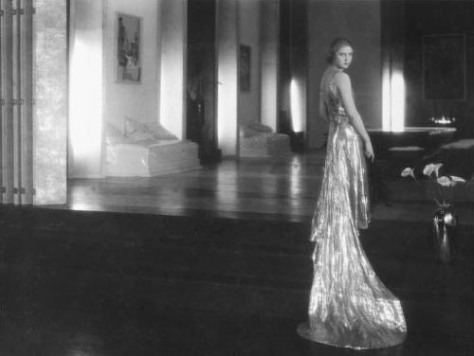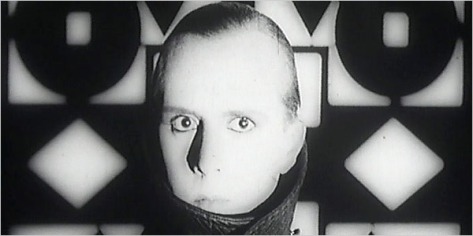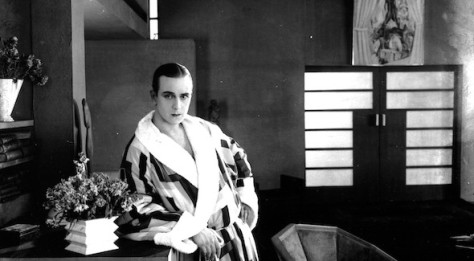
The Fashion in Film Festival is a movable feast, but one we can always rely on for some wonderful silent film screenings. This year’s event has just begun, and the focus of the festival is the French director Marcel L’Herbier, who worked in both the silent and sound eras, creating captivating, elegant and strange films of staggering beauty. This is what the festival has to say about his silent films:
During the silent period, L’Herbier’s ambition for the cinema was to create a Gesamtkunstwerk, a cinéma totalwhich would synthesise all the arts and draw together architects, artists, set designers, couturiers and costume designers. Among the many major cultural figures he collaborated with were the artists Fernand Léger, Sonia and Robert Delaunay, the composers Darius Milhaud and Arthur Honegger, the architect Robert Mallet-Stevens, designers Alberto Cavalcanti and Claude Autant-Lara, and couturiers Paul Poiret, Lucien Lelong (L’Herbier’s cousin) and Louiseboulanger. Paired with his multi-disciplinary collaborative approach, it was L’Herbier’s desire to legitimise and ennoble cinema as the ‘seventh art’ that helped establish him as a seminal figure within Paris’s vibrant cultural milieu of the inter-war years.
Using art, fashion and design as the prisms through which to examine L’Herbier’s diverse body of work, Fashion in Film’s season highlights his lifelong interest in cinematic style and aesthetics. As the costume designer Jacques Manuel once observed, costume for L’Herbier was so often a way of ‘feeding’ the ‘mechanical eye’ with evocative surfaces and textures, a way of testing the formal elements of cinema itself such as movement, rhythm, light and shadow.
To feed your own eyes, and for a direct lesson in the importance of costume design to L’Herbier’s total vision of cinematic photogénie, watch the festival’s slinky trailer here.
A true multi-disciplinarian, L’Herbier arrived at film-making after considering literature and music as possible careers, and more prosaically, having worked in a uniform factory during the first world war. When Feuillade’s leading lady Musidora took L’Herbier to see Cecil B DeMille’s melodrama The Cheat, he realised the potential of cinema, and starting out in the army’s cinematographic unit, began to learn the art of film-making. However unlikely a start this may seem, even his very first film, a propaganda piece called Rose-France, was ambitiously experimental.

At first, L’Herbier worked for Gaumont, but his artistic dreams soon clashed with the realities of their budgets, and in 1923 he formed his own company, Cinégraphic. You may be familiar with L’Herbier’s silents already, particularly Zola adaptation L’Argent, which is available on DVD from Masters of Cinema. The Fashion in Film Festival is showing L’Argent, as well as sci-fi opera L’Inhumaine (The Inhuman Woman) and doppelganger drama Le Vertige (The Living Image). You can read the full programme of events here. Not showing at the festival, but recently released on Blu-Ray by Flicker Alley in the US, is the Pirandello adaptation Feu Mathias Pascal.

To read more about L’Herbier, and the films showing in the Fashion in Film Festival 2013, read Samuel Wigley’s piece on the BFI website, which includes a sumptuous picture gallery. Also, in this month’s issue of Sight & Sound magazine, David Cairns offers an excellent study of the films showing at the festival and a director he describes as “commingling High Seriousness and High Camp in an ecstatic personal vision”. Now, don’t you want to see what that looks like?
Read more and book tickets, here on the Fashion in Film Festival website. The festival runs from 10-19 May.
2 thoughts on “Fashion in Film Festival – Marcel L’Herbier”